June 20, 2025 | 16:14 GMT +7
June 20, 2025 | 16:14 GMT +7
Hotline: 0913.378.918
June 20, 2025 | 16:14 GMT +7
Hotline: 0913.378.918
Residents of coastal communes in Binh Son District, Quang Ngai Province, have been enabled to harvest sargassum during its designated season since June 1. In Thanh Thuy and Phuoc Thien hamlets of Binh Hai Commune, numerous households have set off on a voyage to the sea to gather seaweed.
Each harvesting expedition lasts from the early morning to the early afternoon. After being harvested from the seabed, the seaweed is loaded onto basket boats, conveyed to the shore, sun-dried, and packaged for sale to traders.

A fisherman in Binh Son District harvesting sargassum. Photo: Vo Ha.
Whenever they observed floating seaweed, individuals would immediately hurry out to harvest it, without distinguishing between mature and immature plants, according to Mr. Le Van Thang, a resident of Thanh Thuy hamlet.
It is now evident that the appropriate season is necessary to obtain high-quality seaweed. Mr. Thang clarified that the next season is impacted by the low yield that results when the seaweed is harvested prematurely, prior to its complete development.

According to local fishermen, the occupation is labor-intensive, but it provides a substantial increase in household income. Photo: Vo Ha.
Sargassum typically flourishes on submerged boulders and coral reefs at shallow depths of 3 to 6 meters. Harvesters must dive down to cut each clump, taking about 5–7 minutes per dive.
"This position is physically demanding, and the harvesting season occurs during the hottest months", Mr. Thang went on to explain that each household can increase their income by collecting a substantial quantity during the few weeks when seaweed is in season.
A noticeable change in public consciousness has occurred since the inception of the project "Protection, Harvesting, and Development of Sargassum in Coastal Communes of Binh Son District Tied to Sustainable Community Livelihoods."
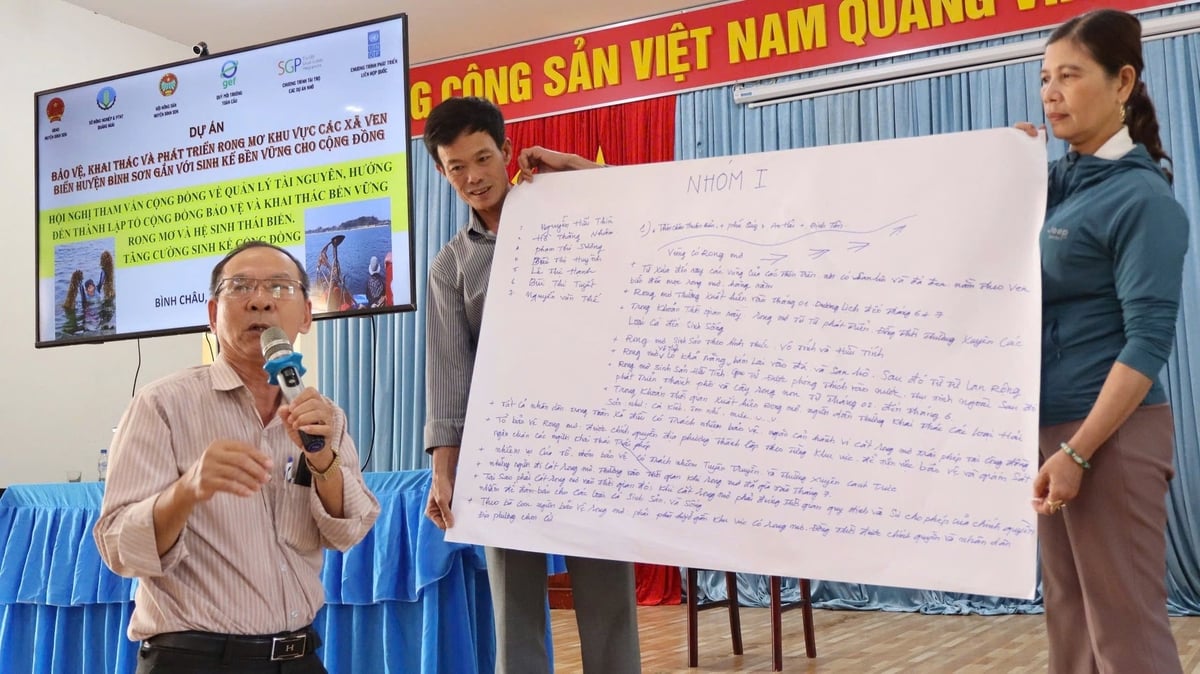
Sustainable harvesting practices are encouraged through training sessions. Photo: Vo Ha.
Funded by the United Nations Development Programme (UNDP) and the Global Environment Facility's Small Grants Programme (GEF SGP), the initiative is scheduled to operate from September 2024 to October 2025 and has a total budget exceeding VND 2 billion. Implementing agency is the Binh Son District Farmers' Union.
Regular technical training sessions have been conducted as part of the initiative to assist local residents in comprehending the optimal harvesting times that correspond with the seaweed's growth cycle. In addition to conducting surveys to identify growth zones, the project has also issued official harvesting schedules, created zoning maps for seaweed conservation, and collaborated with experts and relevant authorities.
In tropical and subtropical marine regions, including the central coast of Vietnam, sargassum is a prevalent seaweed species. If harvested appropriately, it can regenerate rapidly and thrives in the summer, adhering to coral reefs and rocks.
At present, desiccated sargassum is priced at approximately VND 5,500–6,000 per kilogram. A substantial income source for numerous coastal families, the average yield of dried seaweed per household per day during high season is approximately 2 tonnes.
In addition to its economic value, sargassum serves as a natural "biofilter" by absorbing CO₂ and enhancing the quality of seawater. In addition, seaweed beds serve as breeding sites and habitats for a variety of aquatic species, thereby benefiting the preservation of coastal biodiversity.
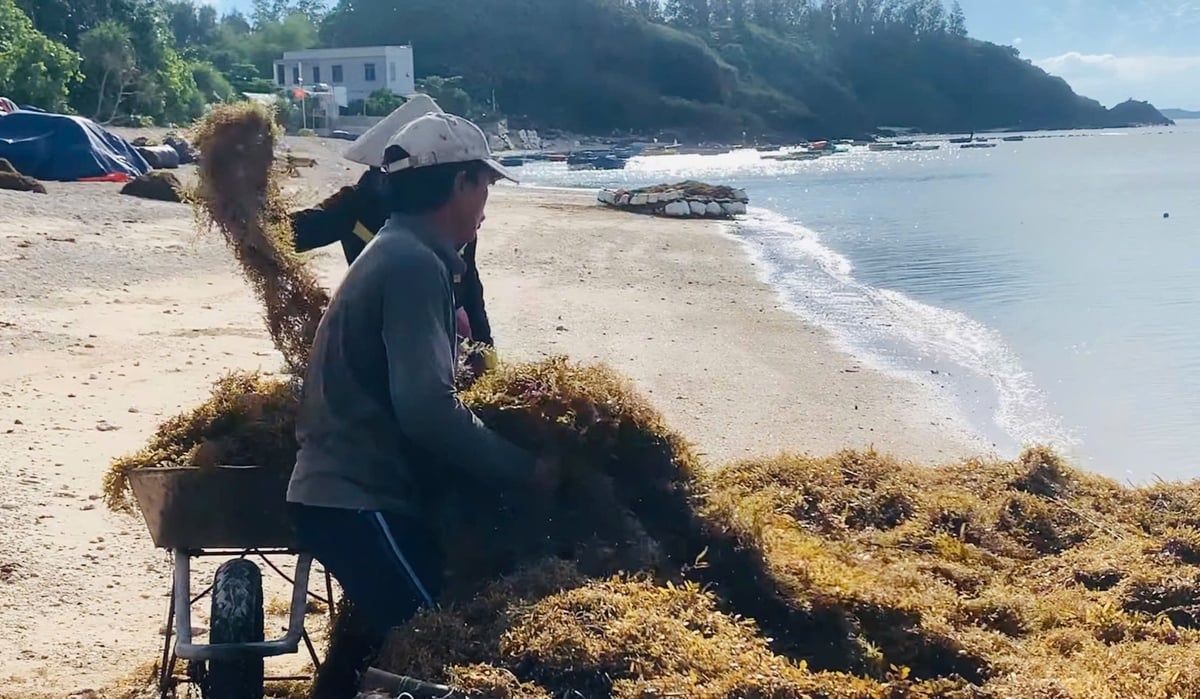
Sargassum is harvested by fishermen. Photo: Vo Ha.
It is estimated that the total natural sargassum area in the communes of Binh Hai, Binh Tri, Binh Thuan, and Binh Chau exceeds 250 hectares. In the past, harvesting ordinarily transpired from May to July without any official oversight or scheduling.
In the present day, residents adhere to regulated harvesting schedules in stringent accordance with the project management team and local authorities. The Village Officials of Binh Hai Commune have been designated by the People's Committee to supervise and promptly address any violations of the timing regulations.
Sargassum is not only an essential source of income for coastal residents, but also a critical component in the preservation of the marine ecosystem, according to Ms. Trinh Thi Chau Oanh, Chairwoman of the Binh Son District Farmers' Union and leader of the project management board.
Ms. Oanh stated that this initiative prevents destructive harvesting practices, supports the recovery of marine resources and biodiversity, and ultimately establishes a sustainable livelihood model that is consistent with environmental conservation.
Translated by Linh Linh
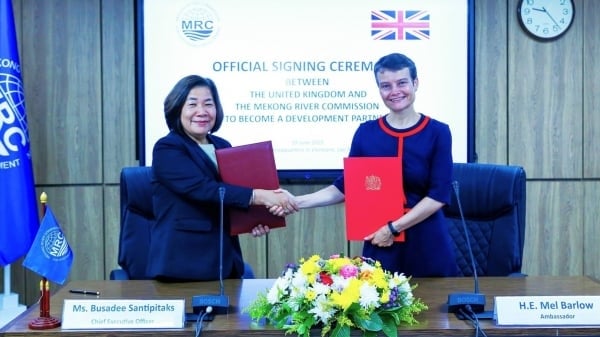
(VAN) On June 19, the United Kingdom officially became a Development Partner of the Mekong River Commission.
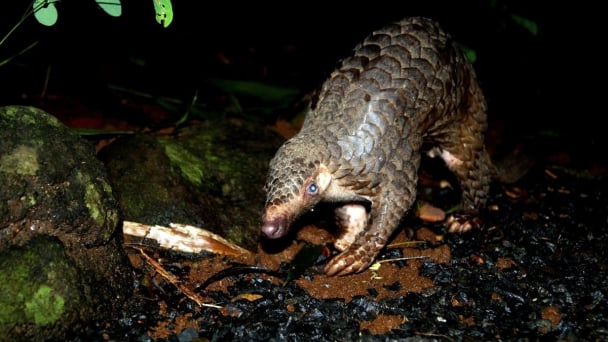
(VAN) Biodiversity is being threatened by traditional remedies made from wildlife. Traditional medicine and humans must change to live in harmony with nature.
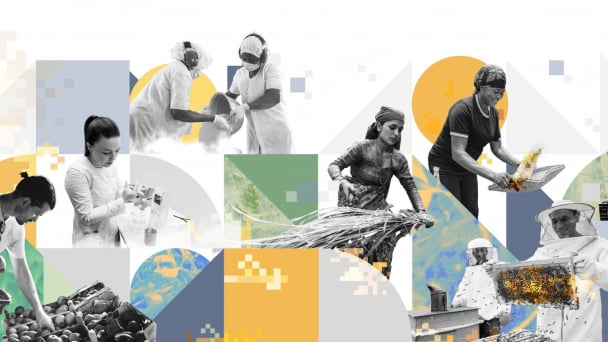
(VAN) Agrifood investment and finance solutions for people and the planet.
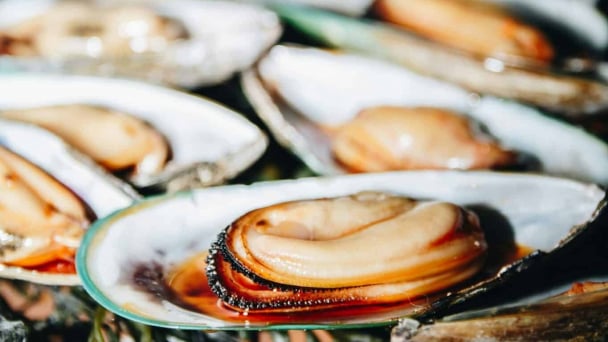
(VAN) Microplastic contamination has become pervasive in seafood, posing unprecedented challenges for food safety and marine ecosystems.
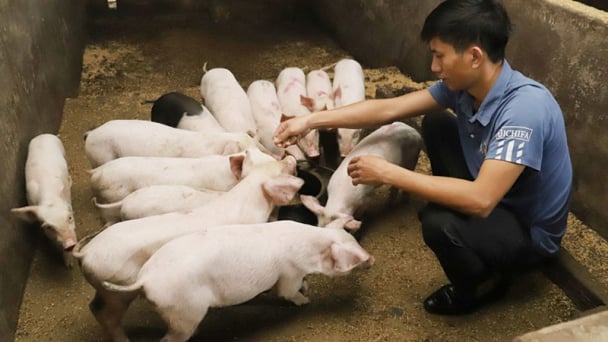
(VAN) Proactively using vaccines, combined with transport control and enhanced surveillance, is the only viable path toward biosecure and sustainable livestock production in Vietnam.
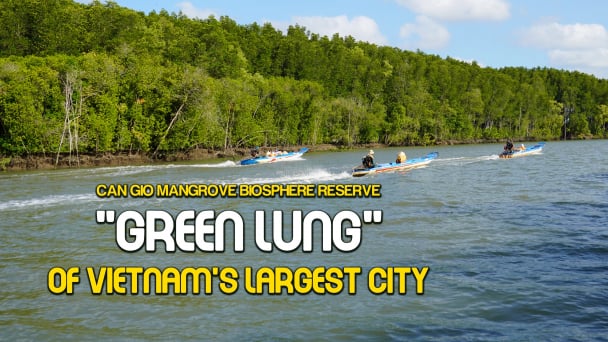
(VAN) Located in the southeast of Ho Chi Minh City, the Can Gio Mangrove Biosphere Reserve is considered the ‘green lung,’ a solid shield protecting the city.